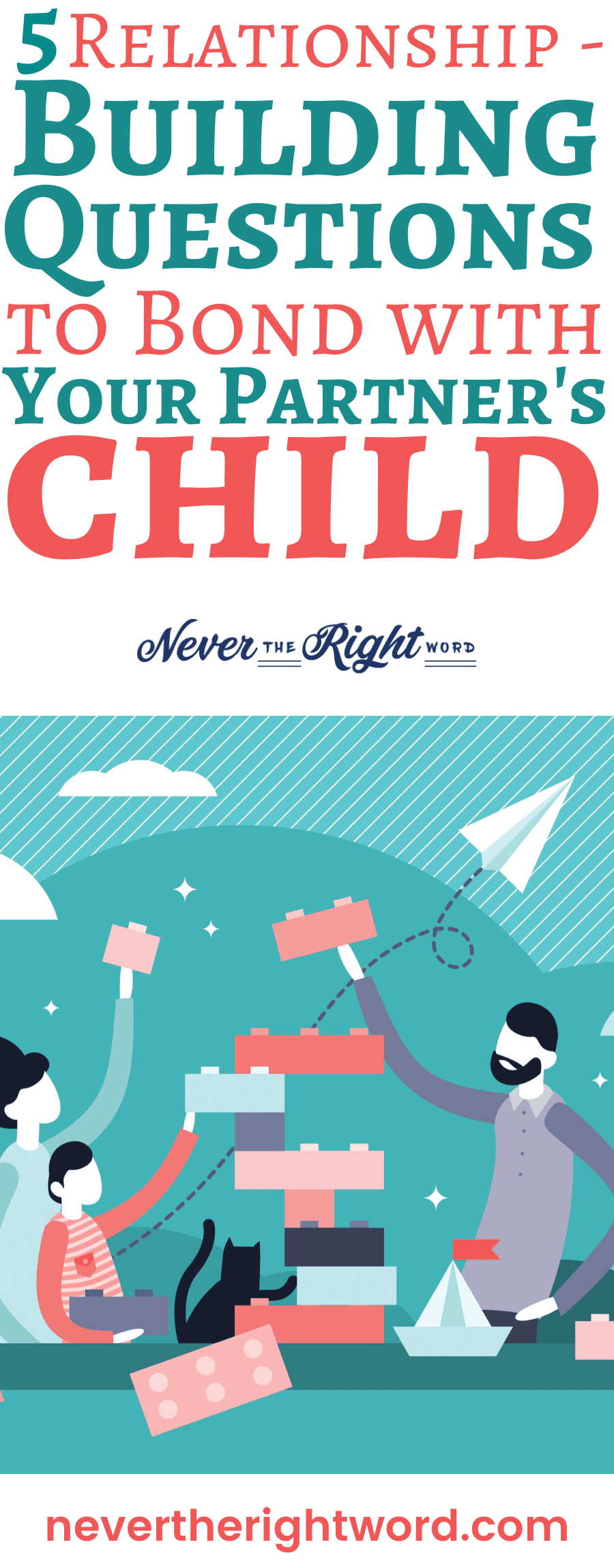Shy Child? Here’s How to Bring the Social Butterfly Out!
If you’ve ever been to a kid’s party only to find that your child is the only one sitting on the side, not engaging with any of the other children, you might be concerned.
Like most parents, you want the best possible future for your little one(s), and you expect your child’s life experience to be significantly enhanced if you instill them with the correct level of self-esteem and confidence in social situations.
Among the many other aspects that construct a fulfilling life, many psychological studies suggest the first seven years of our lives are instrumental when it comes to building our expectations of platonic and romantic relationships.
It’s not surprising that you want your child to embrace who they are in social situations, whether they are the shier type who takes their time to build long-lasting relationships or the vibrant social butterfly.
Now good intentions are great, but this article is for those of you wondering how actually to teach a child to be more confident?
As with most things in life, practice makes perfect. Social confidence develops like a muscle- through providing opportunities and exercises for your kids to experience social situations and thrive.
Providing your child with opportunities to explore making decisions for themselves and commending the effort put into something rather than aiming for perfection builds long-lasting high self-esteem and character.
It’s difficult to express adequately to a child the importance of being able to express yourself to others, but the earlier that skill develops, the better off in life your child will be.
Is Your Child Shy?
It’s crucial to remember that not all children who play alone happily are shy. There is a difference between shyness, social anxiety, and introversion, and your child might fall further along the introverted side spectrum. (This simply means they recharge best by exploring their inner world and thoughts.)
Fear and anxiety may appear due to shyness. Still, anxiety disorders are than shy and should be treated as such by a qualified and competent medical health professional in your jurisdiction.
According to the National Alliance for Mental Illness, anxiety affects around 7 percent of minors aged 3 to 17 in the United States (Source).
Some possible signs that your child may be shy are; they never want to be apart from you, they’re struggling at school, or they have a difficult time making friends.
Children who have experienced bullying are at higher risk of developing shyness, and those who are always put down may overcompensate for shyness with aggressive or disruptive behavior. As you can imagine, those who have experienced neglect are sadly at risk as well.
What Causes Shyness in Children?
Research suggests that around 15 percent of young children are born with a tendency toward shyness (Source). While research has also shown biological differences in the brains of shy people, it is also shyness may be a result of social experiences. A widely believed theory is that most shyness in children develops due to or because of a lack of interactions with parents and other children.
Children who have minimal experience with their peers may grow up having trouble developing social skills, and this with shy parents may emulate that behavior. Connections a child makes within their families and friends contribute to their development.
The great news is that a warm, open, expressive, and caring approach to rearing children usually results in friendly, free, passionate, and caring adults. Below we have some ways that you can bring the social butterfly out of your child:
Plan Some Opportunities For Growth
The reason why many parents opt for public school over homeschooling is to provide their children with more opportunities to interact with and socialize with other children. This especially important for children who may have some difficulty getting along with others.
If that doesn’t work for your particular situation, attending public school is not the only way to expose your child to social interactions. Try other programs such as sports or creative clubs that will boost their interactions and play with their peers.
Whether that be an afterschool club, extracurricular activities, or sports, the more chances your kid has to interact with their peers, the more practice they will get.
When providing these opportunities, it is essential to allow your child to experience the social atmosphere with as little interference as possible. Engineer the situation and try to convince your child to socialize with the other kids, but refrain from making it the only option.
If your child is too reliant on you for their social interactions, they may not be sufficiently equipped to deal with socializing on their own. Therefore, they need to make connections on their own.
Teach Your Child Phrases to Help Them Make Friends – Then Role Play
This is the occasion to have fun roleplaying with your child. Kids can benefit from knowing the words to say when entering a group of children already playing. If your kid knows how to invite others to play with them and how to settle conflicts or issues that arise when playing with others, they’ll likely feel more confident when faced with future opportunities.
Teaching children how to greet another child, giving compliments, and being kind, may seem apparent, but often children need guidance to know how they’re coming across and how to act friendly.
Pretend you are part of a group of kids playing and show your child how to join in. If your kid doesn’t know what to say, you can offer them the following phrases:
Hi, my name is [Insert Name]. What are you playing?
How do I join the game, what are the rules?
Talk about body language and gestures with your child. Roleplay to show facial expressions, body language, and words that invite or repel friendship.
What did my face look like when I asked? Were my shoulders back? Did I smile?
Did I make the other children want to be my friend?
Illustrations courtesy of Shutterstock.
This article was originally published on https://www.nevertherightword.com. If this article appears on any other site other than https://www.nevertherightword.com without clear referencing it is a violation of the copyright owned by https://www.nevertherightword.com.
This article may contain affiliate links. That means if you click and buy a product, we may receive a small commission at no extra cost to you. Never the Right Word is a participant in the Awin Affiliates Program, an affiliate advertising program designed to provide a means for sites to earn advertising fees by advertising and linking to participating merchants. For more information, please view our Privacy Policy and Earnings Disclosure page.
Set Accountability Precedents
One of the best ways for you to help build your child’s confidence in social situations is to help them create goals for themselves. Maybe this starts with you selecting intentions for them, but encourage input from your child as you continue this journey with them.
Let your child know that their input is valuable and that the intentions they set for themselves can have positive and negative consequences.
As with most desires that come from our cores and not from external factors, if your child sees these goals as something that they desire to achieve, you’ll likely notice quick, tangible progress. But if they are also choosing which path they want to go down, they’ll also respect their values and ideals.
If a child can be accountable to themselves, then they will be able to develop socially at a quicker rate as they will begin to rely on themselves to want to continue forward.
When defining goals, you must emphasize that reaching the goal is not as important as putting in the effort to reach the goal. You can celebrate the long-term reaching of a target with a reward or an incentive.
Maybe you’ll treat them to their favorite candy, using words of affirmation, or they’ll get to visit the toy store, but emphasizing the importance of putting in the effort to reach a goal is something you can reinforce to your child through your responses. Be careful not to diminish the reward of success by continually rewarding any activity, but be a constant source of support towards reaching that goal.
Remember to keep your ideas of perfection in check. If your child does not reach their goal, try to determine improvements in the future. Ask your child what they think about their purpose and how close they were to it.
Get their input, but make sure your child understands that failure is part of life and success and that trying again is just as important as reaching their end goal.
Expansion and Growth is the Purpose
Along with setting goals, it is vital to allow your children to dream about the future. For children, they will likely be in school; as a result, they are going to start to be influenced by other children and their teachers. Being able to visualize the future helps them see an incentive to work hard.
When talking about the lives they want for themselves, it is okay to let your children’s imagination run wild- let them set unrealistic goals! Children will grow more realistic as they grow older, but the critical part of this process is to dream about the future.
Visualizing the future gives children a purpose. Having purpose adds meaning to life.
With pre-determined goals and visions of the future, your child will start to see the benefits of the activities they participate in. You can develop this process by demonstrating how things that they are doing or can be doing will be helpful with them along with their goals.
Maybe your child is ignoring other children, and you can kick start their interaction by reminding them of their goals for when they grow up. You can explain the importance of excellent communication when it comes to getting others to believe in your ideas. By setting a purpose, you can better guide your child into doing what they will need later in their lives.
Set a Prime Example
We all want to protect our children, but the more that you protect them, the less able they will be able to defend themselves. So you’ll have to let your kids stand on their own two feet. Take that first step by standing back and allowing them to explore.
The next time your child has a problem instead of answering them straight away, tell them that it’s “something to google” or discuss. Show them how you might go about finding the answer to a question you don’t know.
By instilling this inquisitive nature and independence in your child at an early age, they are more capable of facing problems later in their lives. The ability to trust that you can take care of yourself is what everyone needs.
We all want to help our children, but the reality is we can’t always be there to provide the answers. Train your kids up to value their input as well as the input of others.
The more confident kids are in their abilities to figure the situation out, the better off they’ll be, and the more practice they have at that, the more prepared they will be to head out on their own.
Give Your Child Room to Explore to Build Self Confidence
Your child must have room to develop using their intuition and guidance. In some circumstances, you’ll need to intervene, and it is never wrong to help when your child, but ultimately, it is best to give your child some room to explore.
Children can be incredibly imaginative and creative. The influence of others, either you as parents or your child’s peers, can dampen that creativity, intuition, and expression.
Moreover, the activities that a child does on their own can often mean more to them than group activities. You may well know that this can be especially significant to more introverted children.
When kids spend time by themselves, you’ll be able to see what makes them tick, as well as their instincts when they come unstuck. Ensure they are spending their time constructively, but otherwise okay to sometimes leave them alone if they want to be.
Embrace Negative Emotions – Show Your Child it’s Okay to Feel Bad Sometimes
Emotions lead to the most significant and most transformative times of our lives. They can often lead to actions that would be incomprehensible or just against our personalities in a normal circumstance.
Emotions are at the heart of the problems of adults, not just children, but the earlier one learns to deal with them, the better off they will be for the rest of their lives, which is why you as a parent can’t be afraid to face feelings.
Whether those feelings are your own or your child’s, it doesn’t matter; by facing these emotions, your child will have an example to look to in the future. Discuss your thoughts and demonstrate how you can look at the situation logically despite all your emotions.
Allowing space to feel negative emotions will better equip your child to deal with these issues themselves. Keep providing ways for your child to be able to provide for themselves. That way, they’ll only need you when they encounter a situation that they aren’t sure how to handle.
Often in those situations, it can help to have a second opinion. A lot of people believe that emotions are to be taken care of in private, but sometimes an outsider’s perspective can be cathartic.
Demonstrating to your child that it is okay to get an outsider’s perspective on an issue provides an example of humility that they can adapt when they’re facing a problem that requires extra help.
As parents, we often don’t want to show weakness to our kids. Still, by never revealing the less desirable aspects of ourselves to our children, we force them to accept reality, which results in the distorted view people sometimes have of their parents.
Realizing we are all flawed can be difficult for a child, as they’ll want to be like their parents and see them as perfect people. Go against the concept that to be worthy and valuable, you must be perfect, and instead show them you’re human, that you’re just like them.
Build confidence in your child by allowing them to recognize who they are. If they can see that they are like you, and they can start figuring out that the world is full of people just like them.
Don’t Forget to Embrace Those Good Feeling Emotions Too – Praise Them!
When expressing your feelings, keep the balance of negative and positive with a preference towards choosing to look at the positive side of life.
We all love our children, but the way that we show that love can be different, in some ways, our children may not understand that, which can lead to frustration and a lack of feeling appreciated. Avoid this by being open about your love and the way that you love.
Children need to see you express your love for them, so be sure to show how much you care for them while also making it natural and earnest.
It is challenging to find the right time and way to praise someone, but it always feels good to be appreciated. Admit when your proud and make sure they can recognize the care that you hold specifically for them.
Be a Role Model
If there is one overarching concept that you can use to provide for each of these suggestions, it is that you can and should practice what you preach and be a role model for the behavior you want your children to have. If they need to be more social, then you need to be more social.
It is hard to break the “I am” that we have created for ourselves. It becomes more difficult as we grow older. So for the sake of your children, be the example that they need to see to grow into the socially confident people they can be.
Parenting requires a lot of effort, but as with most difficult but completely worth it aspects of life, it is often the small repeated actions that end up being most influential. In the same way that kids will use the same words that you do, they will mirror your actions.
Be mindful of your actions and what you are doing as this sets an example. Be aware of your efforts, and that a little pair of eyes are watching you. They’ll have their struggle to deal with in life, but having a strong foundation from an early age and a great example to look back on will prepare your child for the ups and downs of life.
At Never the Right Word, our aim is to give you practical examples of how to handle life’s difficult conversations. If you have an awkward situation that you’d like example templates for, request a topic here.
If you’re interested in further reading, we’ve also included links to our trusted resources and related posts below. To find out more about NTRW and our recommended tools, you can do that here.
Lastly, if you found this content helpful or want to share your own examples, let us know in the comments. We’d also be delighted if you shared this article and joined us on social media too!

Never the Right Word
Hi there! I’m Amy, and I’m the person behind Never the Right Word. I’m a designer-by-day who’s fascinated by human psychology; you’ll find me learning about what makes others tick through all types of media and good old-fashioned conversation. Learn more about me here.
In 2019 Never the Right Word was born to fill the gap of ‘how-to’ websites with copy and paste examples showing you EXACTLY what you need to say to steer difficult conversations into positive outcomes.
Recent Articles...
Relevant Books We Recommend...
In Talking to Children about Divorce: A Parent's Guide to Healthy Communication at Each Stage of Divorce, author Jean McBride brings 25+ years of specializing in divorce to guide you through the crucial but difficult conversations. McBride also suggests how you can cultivate an environment of love and support throughout the transition. You’ll learn how to have honest conversations about different situations and emotions that tend to surface during a divorce. Whether you're beginning the process, or have been working through it for quite some time, Talking to Children About Divorce offers practical advice that will contribute positively to your child's emotional wellbeing. CLICK HERE to get your copy.

In Nonviolent Communication: A Language of Life, author Rosenberg presents his strategies for speaking our deepest truths, addressing our needs and emotions, and honoring those same concerns in others. Over the past 35 years, author Marshall Rosenberg has peacefully resolved conflicts in various situations such as families and workplaces across the world in 30 countries. This book outlines his secrets to communicate successfully in professional and personal relationships. Nonviolent Communication teaches the reader the art of observing others without judgment, authentic communication when it comes to our own needs and feelings, and learning to not take negative responses personally. CLICK HERE to get your copy of Nonviolent Communication.

In Gravitas: Communicate with Confidence, Influence, and Authority leading voice coach, speaker, and author Caroline Goyder reveals that by being grounded in your values and capabilities, you will gain the authority and reputation needed to keep your listeners engaged. This book is perfect for anyone looking to polish their public speaking or general communication skills. Each chapter guides you step-by-step through practical techniques and exercises to give you the tools for great presentations, productive meetings, and persuasive pitches. Gravitas helps you to overcome anxiety, learn how to deal with difficult people properly, and feel calm and in control when public speaking. You can get your copy of Gravitas by CLICKING HERE.

Nationally recognized communication expert Debra Fine reveals the techniques and strategies anyone can use to make small talk in any situation. The Fine Art of Small Talk: How To Start a Conversation, Keep It Going, Build Networking Skills -- and Leave a Positive Impression! will help you learn to feel more comfortable in any type of social situation, from lunch with the boss to an association event to a cocktail party where you don't know anyone. We likeThe Fine Art of Small Talk because it has very detailed advice regarding speaking to people from starting a conversation, continuing a conversation, transitions, topics of conversation, etc. Overall the book is extremely helpful, especially for those who experience anxiety with social situations. CLICK HERE to get your copy from Book Depository.
Check Out Our Recommended Resources.
Looking to become a digital publisher like us? We highly recommend these tried-and-tested tools:
We Recommend Elegant Themes
The Elegant Themes membership gives you complete access to 87 amazing themes and 3 awesome plugins, including Divi, the ultimate WordPress Theme and Visual Page builder. Elegant Themes have been building the world's most popular WordPress themes for the past 10 years, and rest assured their products will always be improved and maintained.
Build Anything With Divi Theme
One of the most popular WordPress themes in the world. Building layouts is easy and fast, making it ideal to create mockups and wireframes, prototyping a design, and creating the website itself. Build from the frontend or backend. The builder is intuitive. It's easy to learn and can be used by non-developers to create amazing websites.
Customize With Divi Cake Plugins
Divi Cake’s main goal is to help the members of the Divi community find the perfect premium Divi themes, layouts, and plugins created by leading Divi developers and designers. Shop hundreds of premium Divi products like Divi child themes, Divi layouts, and Divi plugins on Divi Cake, the community-driven Divi Marketplace. Find out more about Divi Cake here.
We ❤️Shutterstock Media
We get our images from the OG in stock assets. Boost your business with the right images. They're royalty-free and ready to use. Footage & Music Libraries. 4k Images Added per Hour. No Daily Download Limit. Speedy Search & Discovery. With flexible plans and countless amounts of premium content uploaded weekly, we had to mention Shutterstock.
Skill-Up With LinkedIn Learning
When you want to enhance your professional skills with expert-led, online video tutorials, the only place to go is LinkedIn Learning (Lynda). With a subscription you get 24/7, unlimited access to over 13,000 business, design & tech online courses and with a free month. We like them because we get expert-led courses that we can access anytime, anywhere. What's not to love?
Reliable Hosting With SiteGround
SiteGround boasts a whole list of fantastic features at amazingly affordable prices. Along with multiple growth options, free site transfers and domains, built-in Content Delivery Network integrations, WordPress support, AND human support we wouldn't go to anyone else. They're basically faster, safer, and more supportive- you can check them out here.
We Trust Grammarly Premium
Even seasoned writers need a helping hand at times, that’s why we trust Grammarly Premium. As the World's Most Accurate Online Grammar Checker, Grammarly Premium goes beyond grammar to help you ensure that everything you write is clear, engaging, and professional. Try Grammarly Premium’s AI-powered assistant here.
Find Graphics With Creative Market
Creative Market is the world’s marketplace for design. Bring your creative projects to life with ready-to-use design assets from independent creators around the world. We love the unique finds, social media templates, vectors you name it they have it. I also doesn't hurt that our founder has a little store on there...
Powered by Creative Market
Powered by Creative Market
Contact Us
Follow NTRW
Support NTRW
Donating to Never the Right Word will
help us produce more free content. Thank you!





















